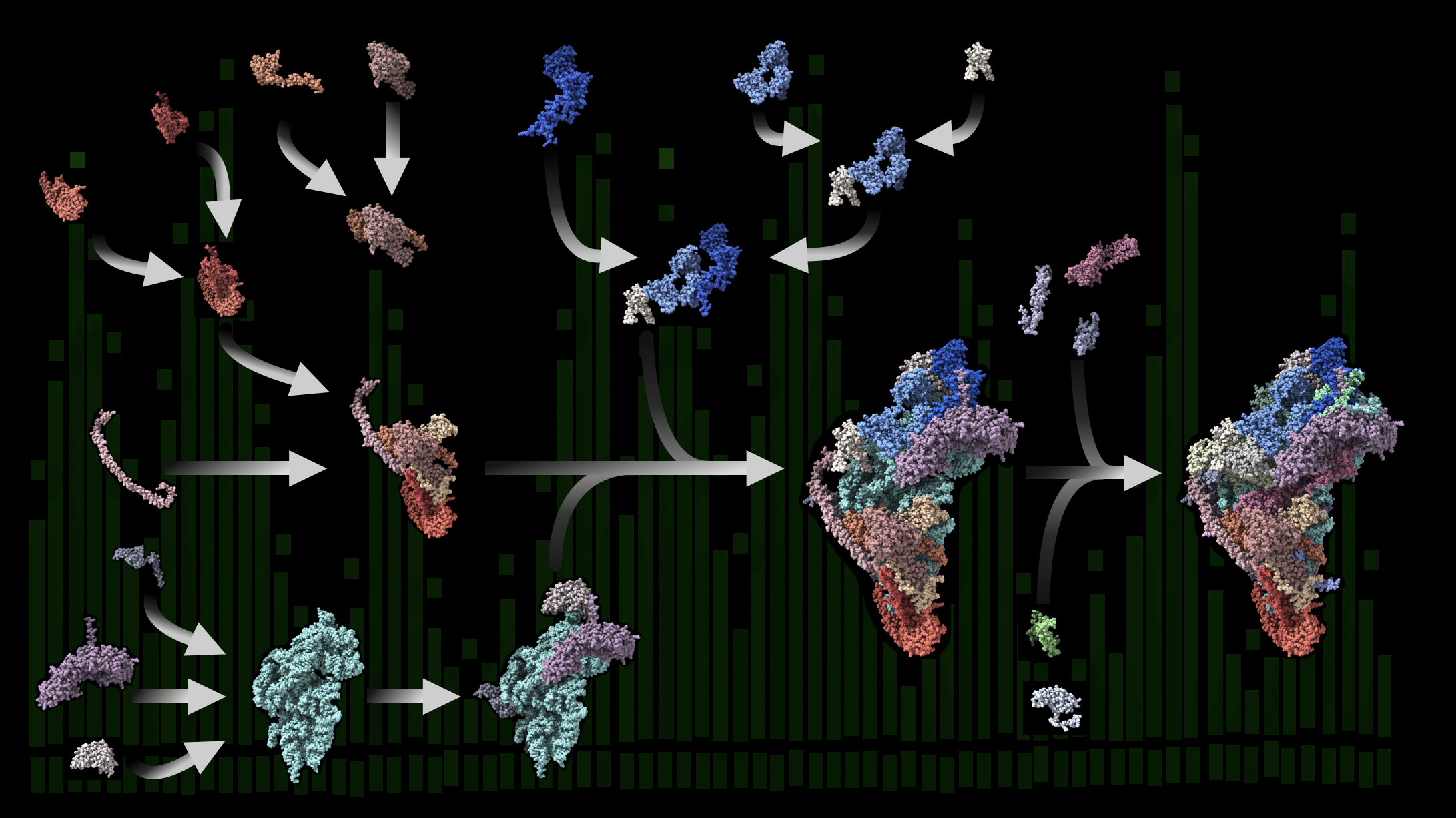Current topics
-
Biogenesis of the human mitochondrial ribosome
- Mitochondrial translation and associated quality control
- Mitochondrial ribosome rescue and recycling

The small ribosomal subunit assembles in a modular fashion in human mitochondria. Ribosomal proteins assemble into protein clusters before forming complexes with ribosomal RNA (cyan). (Figure created by Elena Lavdovskaia)
Lavdovskaia et al. (2024) Nat Struct Mol Biol
Research focus
Ribosome biogenesis and function in human mitochondria
The human mitochondrial ribosome has an essential role for cellular energy supply as it synthesizes the thirteen mitochondrial DNA-encoded core subunits of the oxidative phosphorylation (OXPHOS) system. Defects in the mitochondrial ribosome lead to OXPHOS deficiency associated with severe early-onset diseases. We are interested in how this complex machinery, composed of 82 nuclear-encoded ribosomal proteins and 3 mitochondrial-encoded RNA moities, assembles. We investigate the molecular function of assisting factors and the quality control steps during the process of assembly. Additionally, we focus on several aspects of mitochondrial translation especially on translation termination and ribosome rescue and recycling. Our work reveals molecular mechanisms for mitochondrial ribosome biogenesis and function and by this also broaden our understanding in the clinical presentation of associated diseases.
